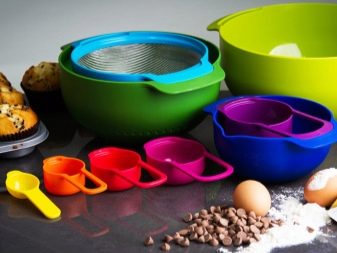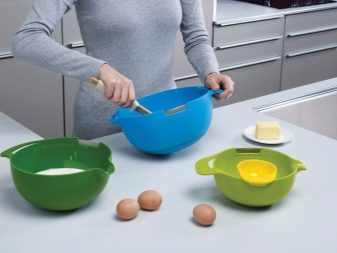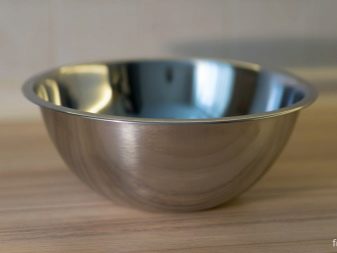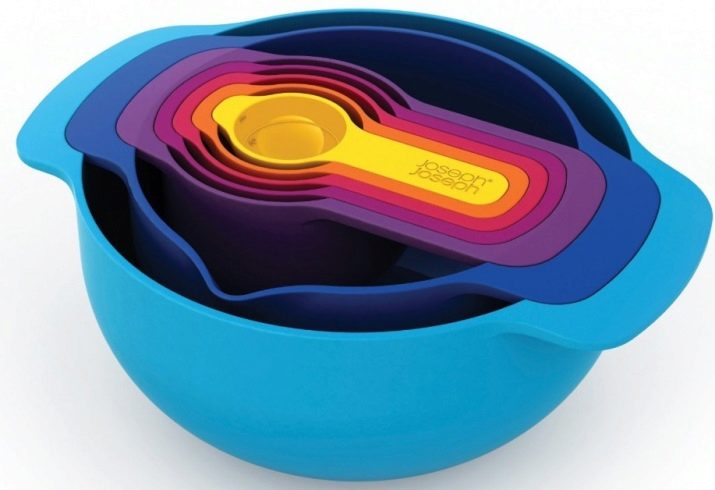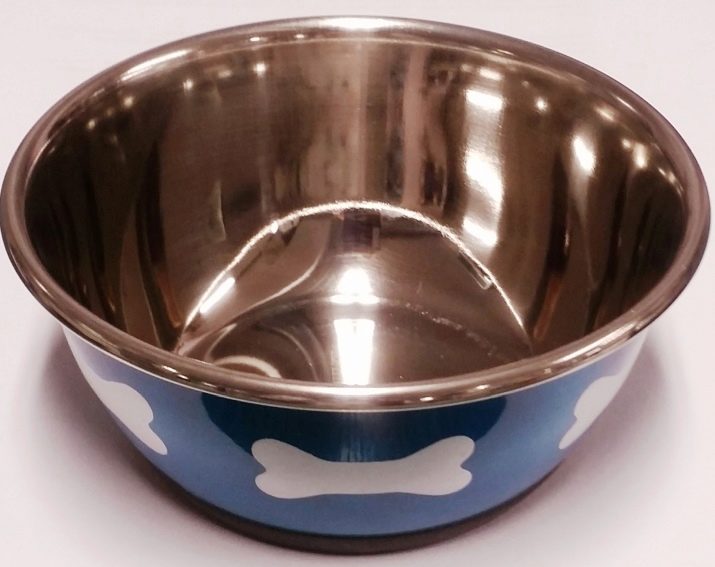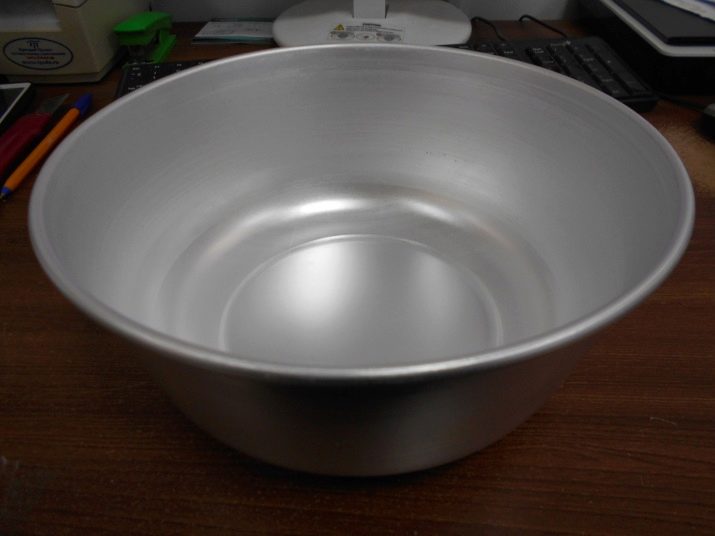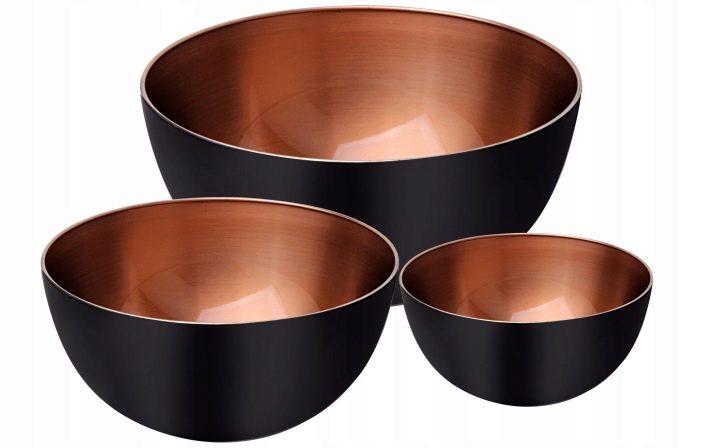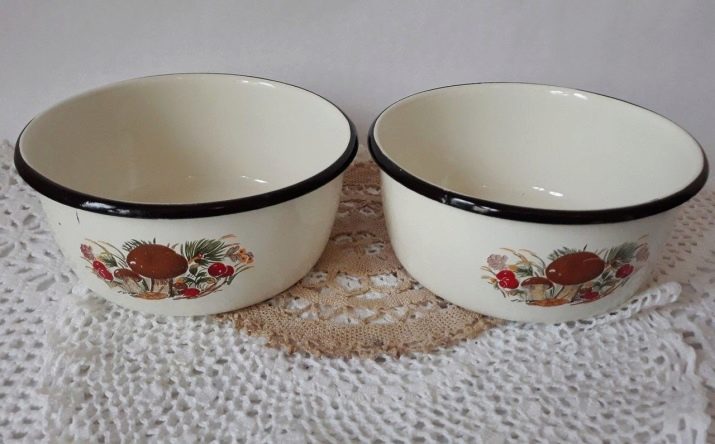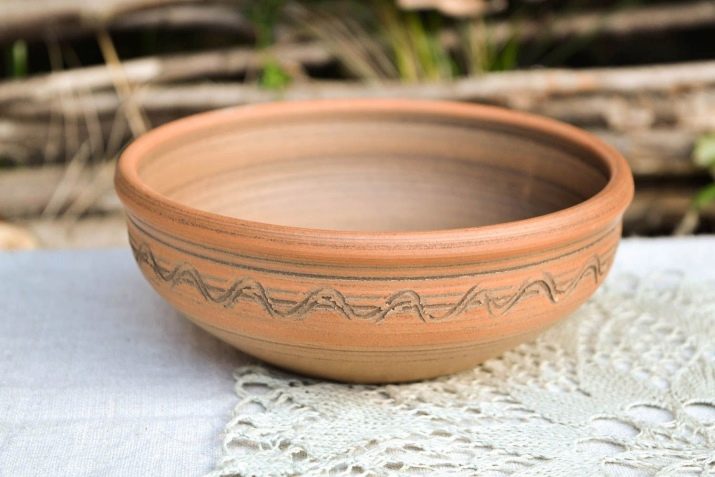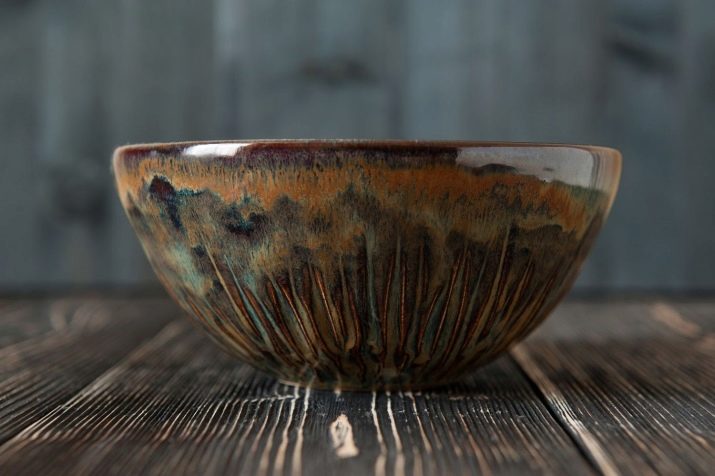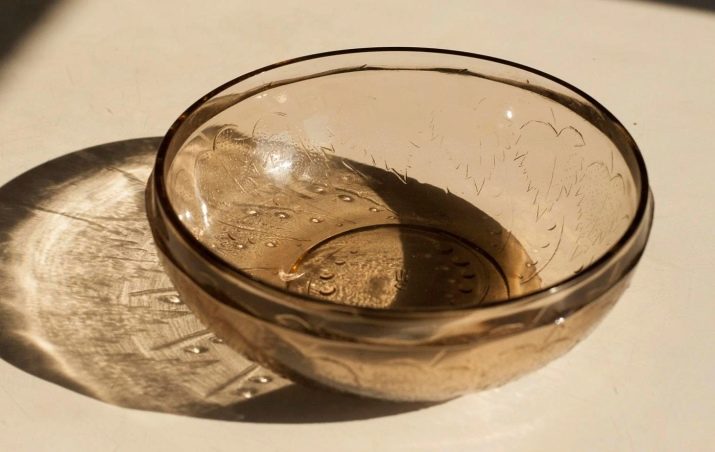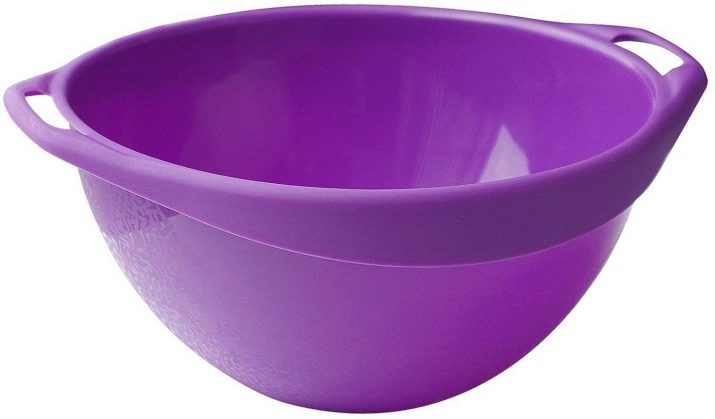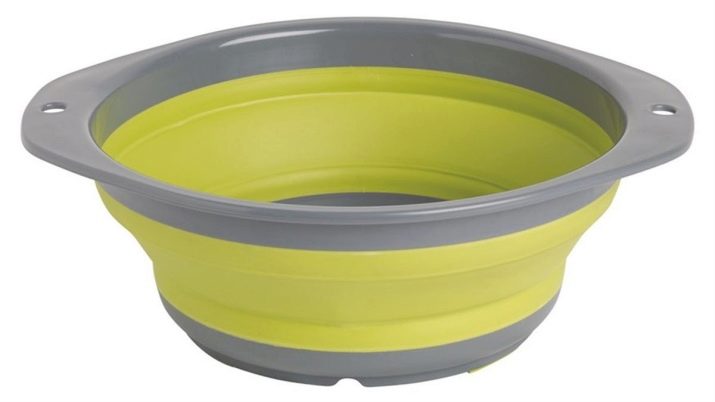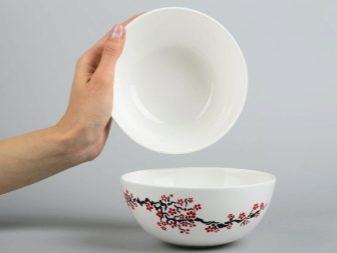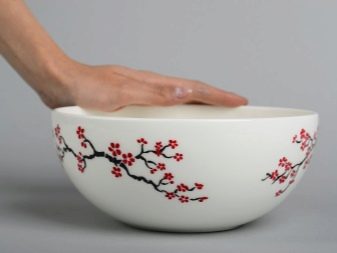Bowl is called the deep and wide dishes, similar in appearance to a small basin. This type of kitchen utensil most often has a hemispherical shape without a lid and handles. A distinctive feature of this dish is a thin bottom and thin walls. Today, bowls of various shapes and volumes are widely represented on sale. Very diverse and the material from which they are made.
Scope of application
This type of kitchenware is designed mainly for mixing ingredients and churning products. But, besides this, bowls are often used to serve soup and other liquid dishes, for making cereals and salads. They knead the dough, washed fruits and vegetables, thawed food, pickled food, used to store food in the refrigerator.
Exist special bowls with gel heater for quick raising the dough while kneading. This type of tableware, made of stainless steel, is indispensable during a picnic or on a camping trip.
Variety of assortment
Bowls can be sold both individually and in sets. Such kits include from 2 to 6 (or more) elements, which is very convenient, since bowls of various sizes can be used for a variety of purposes. In small containers it is convenient to preheat the first dishes and pickle foods, you can store small portions of food in the refrigerator.
Medium-sized bowls are most often used to make salads or minced meat, they are also used to store food. Large bowls are ideal for kneading dough in them, for serving salads and other dishes to the table.
Features of the materials of manufacture
Today, bowls are made from various bases that have their advantages and disadvantages. Most often, this type of cookware is made from the following materials.
- Stainless steel. It is a very strong and durable material that can withstand high temperatures. In stainless steel bowls, you can quickly boil water, reheat food, cook food on the fire. But stainless steel dishes are difficult to clean up from dirt, as any abrasives for kitchen utensils leave scratches on its surface.
- Aluminum. It has good thermal conductivity, is light and durable. But aluminum dishes are destroyed by contact with an acidic environment and with alkaline detergents. Aluminum bowls are recommended for boiling water, but not for cooking.
- Metals. Metal bowls are not painted with food dyes, do not absorb the smell of food, they are easy to wash and keep an attractive appearance for a long time. But, for example, it is undesirable to pour water into iron tanks in order not to contribute to the corrosion process. They are well suited for frying and roasting products. They should be thoroughly cleaned and dried after use.
- Enamel. The steel bowl, covered with enamel, is easy to clean, aesthetic and hygienic. It is resistant to acids and salts. But enamelware requires very careful treatment. Such products do not tolerate shocks and sudden changes in temperature. In no case can not use the dishes with a broken layer of enamel, it is a threat to your health.
- Tree. Wooden dishes are environmentally friendly, durable enough and have their own unique smell. Wooden bowls are ideal for vinaigrettes, salads, berries, pies, pickled mushrooms and vegetables.The serving wooden container looks very impressive on the festive table. However, it should be remembered that such dishes darken over time and can accumulate odors.
- Clay. This is a wonderful natural material. Cooked in such dishes fish, meat or mushrooms have a special aroma and unique taste. In clay bowls you can store food for a long time. This dish, which has no glaze, is absolutely safe for health. Products made of clay should not be placed in a high-temperature environment and rubbed with metal brushes.
- Ceramics. Ceramic dishes are brittle and do not tolerate sudden temperature changes. Such kitchen utensils may contain unhealthy lead. Ceramic bowls are best used for serving ready meals and for microwave ovens.
- Glass. It has an attractive appearance. Glass bowls are easy to clean, but sensitive to any mechanical damage and require careful handling. They are effectively used for serving salads to the festive table. Heat-resistant glass bowls can be washed with chemicals and used in microwaves and ovens.
- Plastic. Plastic dishes are light and do not require special care. Polypropylene plastic bowls with PP labeling are made from a material that is safe for people's health. They can be used for cold and hot food, but can not be heated. Most often, salads and vegetables are placed in such containers. For the mixer and whipping products they use a plastic bowl with a handle, high walls and a stable bottom.
- Silicone. Silicone dishes usually has a bright color, it is resistant to high temperatures, does not absorb foreign odors. Food grade silicone is a safe material. Such dishes can be washed both manually and in the dishwasher. But remember that silicone bowls are very easy to scratch with sharp objects.
- Coconut. These tanks are completely natural, reusable and have a unique design. Coconut is characterized by lightness and high strength. Coconut bowls must be washed by hand and not subject to sudden temperature changes.
Useful tips when buying
To choose the most reliable and practical bowls, you should carefully read the recommendations of experienced chefs.
- Ideally, you should purchase several variants of this dish with different volumes, for example, 1.5, 2.5 and 5 liters.
- For a set of bowls you need to immediately buy a sieve for sifting flour and cereals, as well as a colander.
- For serving ready-made dishes, choose externally attractive and sustainable options. For mixing salads and minced meat fit wide models of this dish.
- If you choose bowls for food storage, then give preference to high-end products with a lid that protects food from oxidation.
- Bowls with a measuring scale allow you to accurately measure the amount of liquid for the dough or porridge.
- Be sure to ask the seller to show a certificate for the selected samples, to be sure of the safety of the dishes.
Bowls are necessary and multifunctional utensils for the kitchen.
They are required to prepare for the preparation of various dishes, and directly during the cooking process, and for further storage of food.
Nowadays, there is a huge assortment of bowls of various shapes and sizes, made of various materials. Properly chosen quality bowls with appropriate care will last you a very long time.
See below for how wooden bowls are made.

